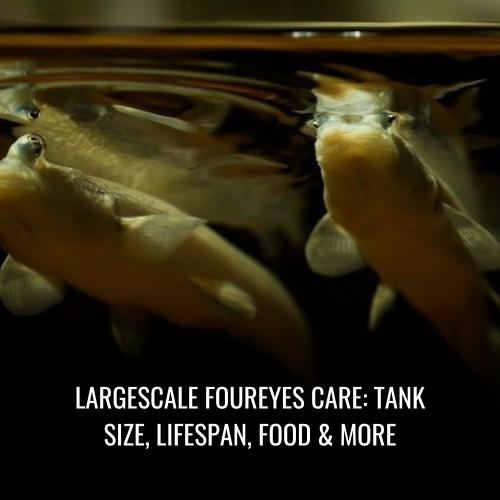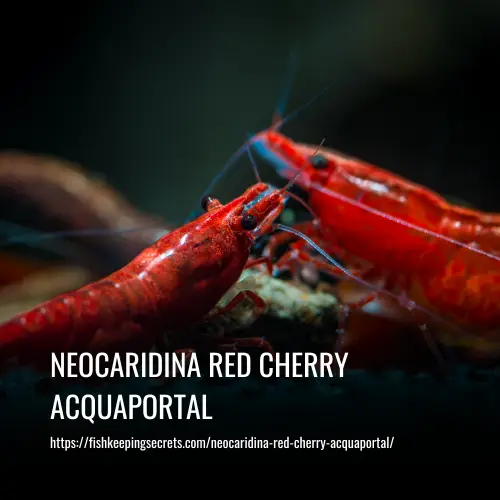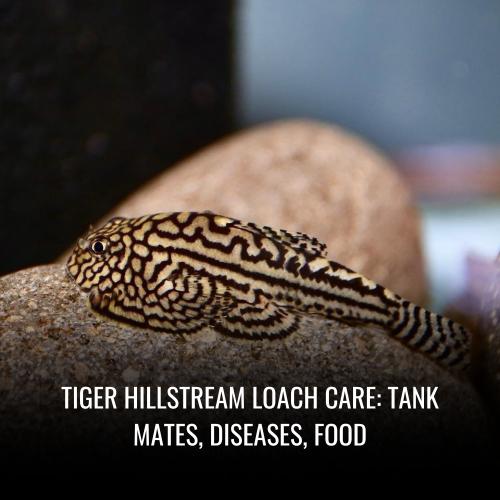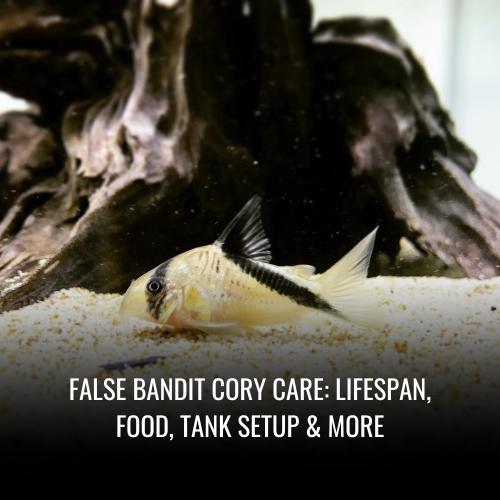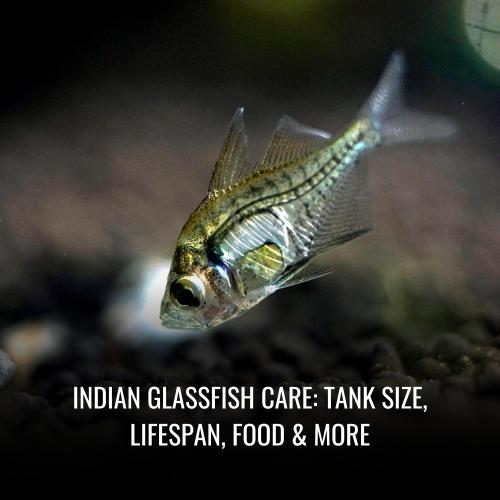Skunk Botia Care: Tank Size, Lifespan, Food & More
This post contains affiliate links. As an Amazon Associate, we earn from qualifying purchases.
The Skunk Botia, known for its iconic dark band running longitudinally along the back, is an engaging addition to many community aquariums. It is a semi-aggressive fish but tends to display peaceful behavior, especially when grouped with its kind or similar community fish. These loaches exhibit a preference for environments furnished with hiding places for rest and a sense of security.
| Scientific name | Botia morleti |
| Common name | Skunk Botia |
| Family | Cobitidae |
| Usual size in fish tanks | 4 to 6 inches |
| Recommended pH range | 6.5 to 7.5 |
| Recommended water hardness (dGH) | 5 to 12 |
| Recommended temperature | 75°F to 85°F |
| Reproduction | Egg layer |
| Origin | Southeast Asia, Thailand and Malaysia |
| Temperament to its own species | Aggressive |
| Temperament toward other fish species | Semi-aggressive |
| Usual place in the tank | Bottom dweller |
| Lifespan | 10 to 15 years |
| Tank size requirement | 20 gallons or more |
| Filtration system | Strong filtration system recommended |
| Sexual dimorphism | Difficult to distinguish between sexes |
| Substrate cleaning | Helps to keep the substrate clean due to scavenging behavior |
Despite a noted semi-aggressive nature, they are often seen as janitors within tanks, consuming algae and tidying up excess food. Although their breeding habits in captivity are largely a mystery, their significant role in the home aquarium compensates for the lack of breeding observations. When considering a Skunk Botia for your tank, ensure a varied diet, including frozen foods like brine shrimp, to sustain their health and vigor. For the Skunk Botia, maintaining a clean and enriching tank environment is vital to their survival.
Scientific Name
The Skunk Botia is a captivating species from the family Botiidae, renowned for its striking appearance and behavior in aquariums. Scientifically named Yasuhikotakia morleti, this loach was once classified under the genus Botia and was formerly known as Botia morleti. Originating from the freshwater systems of East Asia, the Skunk Botia can be found in the waters of Cambodia, Laos, and Thailand, where it thrives in the environment native to these regions.
| Scientific Classification | Information |
|---|---|
| Family | Botiidae |
| Maximum Size | 10cm (4in) |
| Native Regions | Cambodia, Laos, Thailand |
| Notable Feature | Dark stripe marking along the back |
Adult specimens, especially females with their plumper shape, signify the rich diversity within both the Botiidae family and the broader assembly of freshwater fish.
Average Size
The Skunk Loach, known by the intriguing scientific name Yasuhikotakia morleti, is a lilliputian yet active member of the freshwater fish community. Owners can expect these animated loaches to typically reach a size of around 7cm, with the potential to grow slightly larger in well-maintained aquariums. On average, they mature to a length of approximately 3.9 inches (10.01 cm), but it’s not uncommon for some individuals to hit the maximum size of 4 inches in the right conditions.
| Tank Considerations | Specifications |
|---|---|
| Average Size | 7cm (2.8in) |
| Maximum Size | 10cm (4in) |
| Recommended Tank Size | 30 gallons (114 L) |
| Ideal Water Temperature | 79° – 86° F |
Whether in a community tank or species-specific setup, respecting these average size and tank requirements can lead to a healthy, long-lived Skunk Botia.
Lifespan
The Skunk Botia, with its peaceful nature and hardiness, has a commendable lifespan in the aquarium setting, typically ranging from 5 to 8 years with superior care. These intriguing creatures have been documented to live up to almost 8 years in the wild. However, it is common for them to exhibit a shorter lifespan in home aquariums due to variations in their care.
Natural Habitat
The Skunk Loach, heralded from the vibrant waters of Southeast Asia, has made its home in the dynamic ecosystems of the Mekong River Basin, the Chao Phraya, and the Mae Klong Rivers. Thriving in both still and flowing conditions of medium to large water bodies, Skunk Loaches are a testament to adaptability.
| Preferred Conditions | Characteristics |
|---|---|
| Waters | Still to fast-flowing rivers |
| Regions | Mekong River Basin, Chao Phraya, Mae Klong Basins |
| Habitats | Ample hiding places—rocks, cave systems, root networks |
Creating such an environment is crucial for aquarium owners to observe their Skunk Loaches exhibit the natural behaviors that make them such fascinating species to nurture in community aquariums.
Appearance
Appearance is often the first filter through which we are viewed by others, serving as a silent introduction before a single word is exchanged. A mere 30 seconds is all it takes for initial judgments to be formed, with attire and grooming wielding powerful influence over these swiftly-made assessments.
These surface-level perceptions can ripple outwards, affecting more than momentary interactions. There is a strong correlation noted between professional polish and perceived success. Impeccable grooming has been statistically allied with climbing the ladder of achievement. In the realm of social dynamics, physical attractiveness has been noted to cast an aura of positive attributes around an individual, adding perceived layers of friendliness, trustworthiness, and competence.
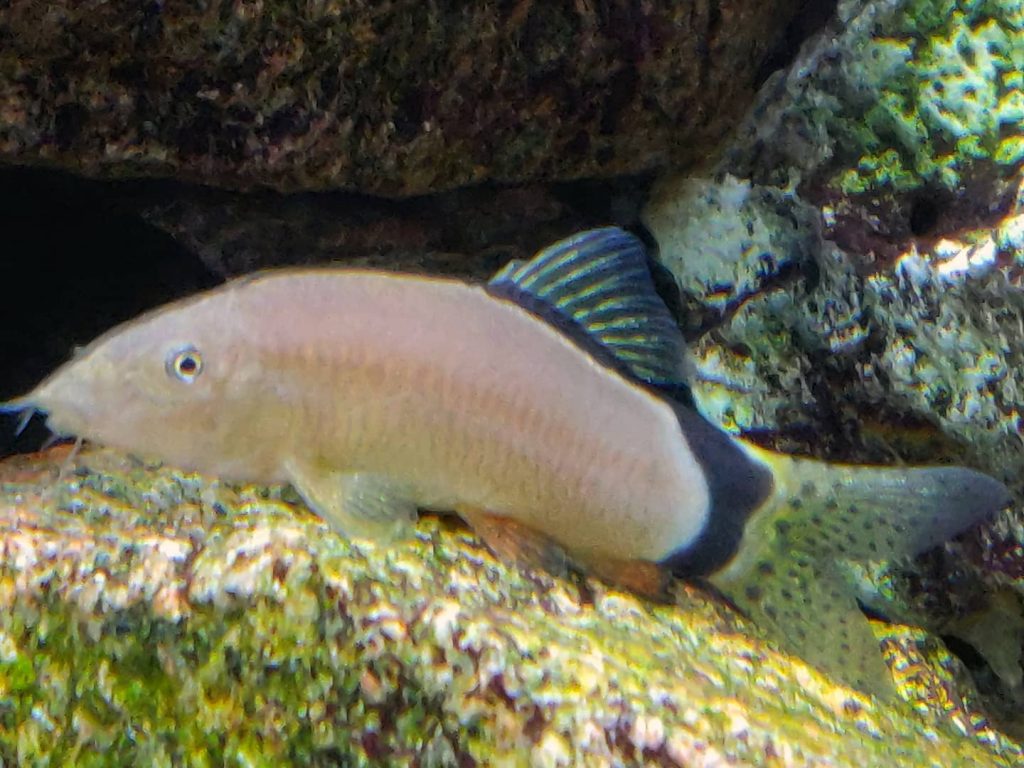
Behavior & Temperament
Discovering the behavior and temperament of aquarium inhabitants is integral to creating a harmonious underwater community. The Skunk Botia, a characterful and semi-aggressive loach, presents unique considerations in this regard.
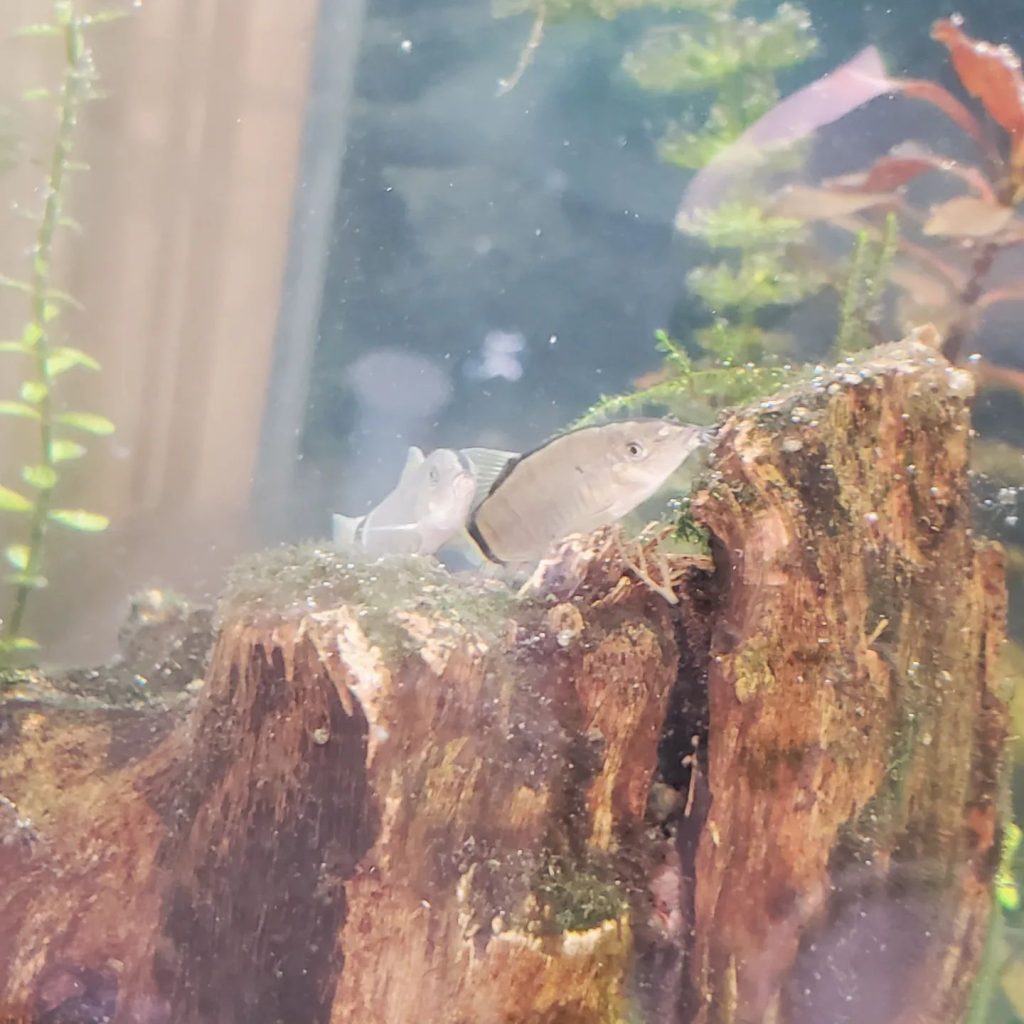
Are Skunk Botia Fin Nippers?
Yes, fin-nipping is a trait of the Skunk Botia. Particularly prone to harassing tank mates that occupy the lower regions of the tank, Skunk Botias can be a threat to slow-moving, bottom-dwelling species like Corydoras. Their fin-nipping habit can also extend to other peaceful tank inhabitants, so it’s important to choose their company wisely to avoid such behaviors.
Are Skunk Botia Aggressive To Each Other & Other Fish?
Skunk Botias exhibit territorial tendencies which can transition into aggression, both towards their kind and other species looking to share their aquatic turf, particularly other bottom feeders. However, when placed in groups, these loaches are observed to be less aggressive, as they’re busy engaging with their cohorts. It is in a larger community setup that individual Skunk Botias may display a notable reduction in aggressive interactions.
Are Skunk Botia Friendly To Each Other & Other Fish?
This loach species does display a degree of sociable behavior, particularly when in the presence of conspecifics. Skunk Botias revel in each other’s company and typically exhibit reduced aggression within an ample group. Though the term ‘friendly’ might be subjective in the fish world, schooling with conspecifics appears to be a comforting and peaceful activity for them. In a community tank with varied species, Skunk Botias may be friendly toward upper water column inhabitants who do not contest their preferred territory.
Are Skunk Botia Schooling Fish?
Certainly, Skunk Botias have a penchant for schooling, especially with those of similar age and size. Yet this schooling behavior is less about tight formations and more about social clustering, which can significantly temper any underlying aggression and contribute to their well-being.
Can You Have Just One Skunk Botia in The Tank?
Keeping a single Skunk Botia can lead to unwanted aggression aimed at other tank inhabitants. Lone Skunk Botias are more prone to chasing and nipping at smaller or more docile fish. Hence, it is not recommended to house a solitary Skunk Botia unless carefully monitored or kept with appropriate tank mates.
Do Skunk Botia Need To Be In Groups?
For a thriving and interactive Skunk Botia community, it is essential to keep them in groups. A group of 3 to 5 is the minimum recommendation, with a larger group of 6 or more being ideal. Group living helps alleviate their aggressive tendencies and triggers cooperative behaviors, enriching their daily interaction and fostering a dynamic aquatic scene.
The behavior and temperament of Skunk Botias, much like the unique bars of color they flaunt, illustrate the complexity of these captivating creatures. Keeping them in groups is not only beneficial for their peace of mind but also for the aquarist looking to prevent territory-driven quarrels. Aquarium enthusiasts will be rewarded with their quirky antics and social interplays when their environment is respectfully managed.
Food & Diet
The Skunk Botia, also known as the Skunk Loach or Yasuhikotakia morleti, has a diverse palate favoring a carnivorous diet that requires careful consideration by aquarists to maintain their health and vitality.
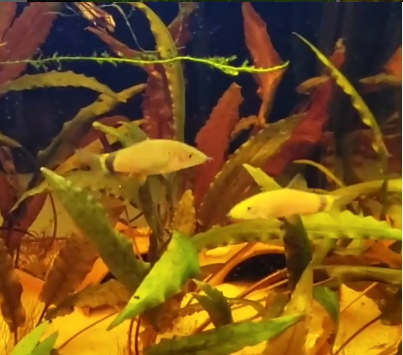
Do Skunk Botia Eat Algae?
While Skunk Botia Loaches are not primarily algae eaters, they have been observed to occasionally nibble on hair algae in the aquarium. Though their preference lies with a high-protein diet, they can play a role as scavengers in the tank’s ecosystem, supplementing their intake with the opportunistic consumption of hair algae.
Do Skunk Botia Eat Shrimp?
Skunk Botias’ small mouths are not well-suited to consume larger shrimp, making them generally safe for cohabitation in a community tank with bigger shrimp species such as Amano shrimp. However, aquarists should note that they may hunt and eat smaller crustaceans like baby crabs or pond snails, and thus, very small or baby shrimp may not be safe from these loaches.
Do Skunk Botia Eat Bloodworms?
Bloodworms are a particular favorite for Skunk Botia Loaches. These loaches thrive on live and frozen foods, and bloodworms fit well into their diet due to their natural inclination to consume meaty foods. Feeding bloodworms to Skunk Botias helps replicate their natural diet and provides the necessary proteins for their well-being.
Do Skunk Botia Eat Mosquito Larvae?
Yes, mosquito larvae are another natural food source for Skunk Botia Loaches. They require a varied diet rich in proteins, and mosquito larvae, being readily available and nutritious, offer a live feeding option that these loaches will eagerly consume. It’s a compatible choice considering their hunting and scavenging habits in their bottom-dwelling lifestyle.
Do Skunk Botia Eat Planaria?
Skunk Botias can consume planaria as part of their carnivorous and varied diet. Their small mouths allow them to feed on these soft-bodied flatworms, adding to their range of suitable live food sources. As efficient scavengers, Skunk Botias will also help manage unwanted planaria populations in the tank.
Do Skunk Botia Eat Plants?
There is no significant evidence to suggest that Skunk Botia Loaches target plants as a food source. They may occasionally rasp at soft algae, but their diet predominantly comprises animal matter and will likely not pose a threat to well-established plants in the community aquarium.
Sexing: Male vs Female
Determining the sex of Skunk Botia Loaches, also known as Skunk Botia or Yasuhikotakia morleti, requires attention to subtle physical differences. Mature females exhibit a more robust and rounder silhouette compared to their male counterparts. In contrast, males typically display a leaner body structure.
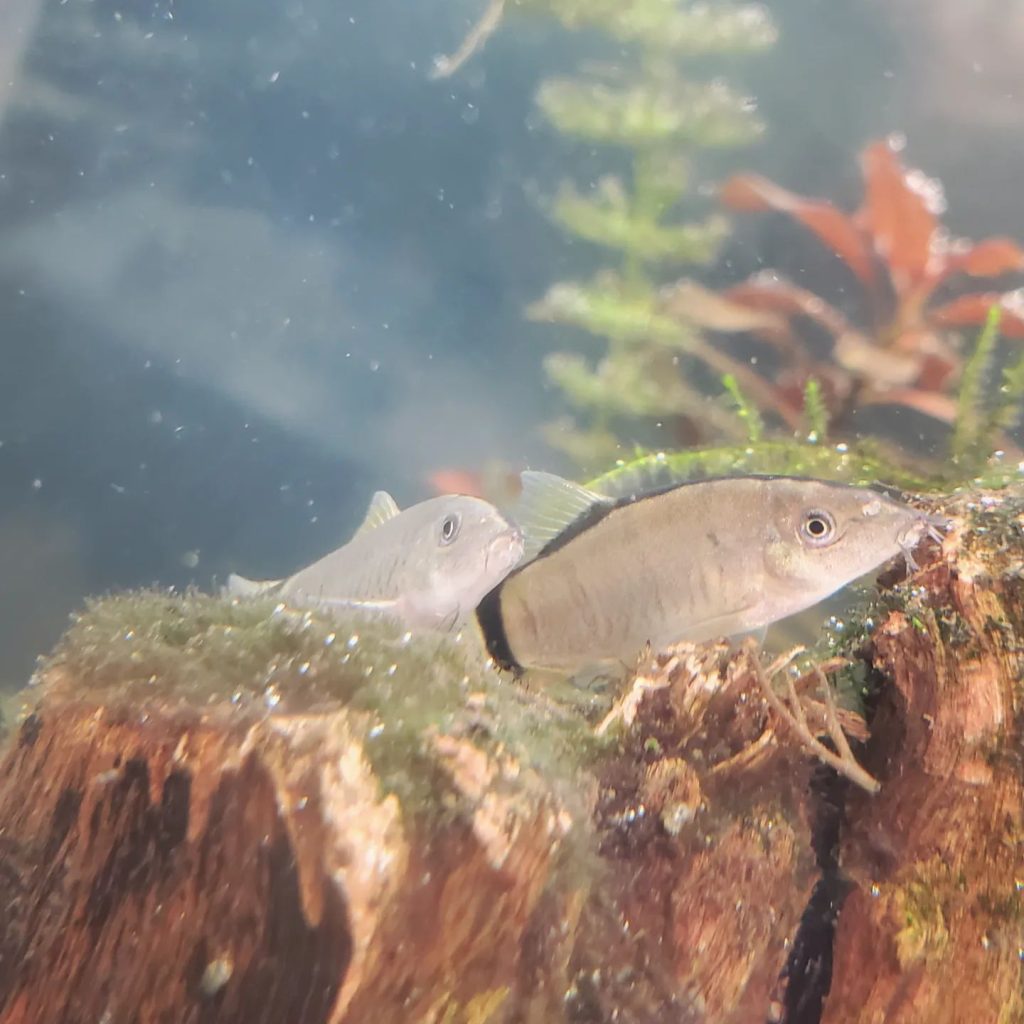
When sexually mature, females often reach a slightly larger maximum size, giving them a distinct profile within a community tank. Despite this difference in appearance, sexing these loaches can be challenging, especially since there are no commercial practices in place to identify males from females. Thus, fish farms do not generally offer gender-specific Skunk Botias, unless the item’s description explicitly mentions the gender.
| Gender | Body Shape | Size |
|---|---|---|
| Male | Slimmer profile | Generally smaller |
| Female | Rounder profile | Slightly larger |
Skunk botia Tank Mates
When setting up a community aquarium with Skunk Botia, also known as Yasuhikotakia morleti or Skunk Botia Loach, it’s vital to choose tank mates wisely. These loaches thrive in groups and show less aggression when housed with at least six individuals, though a group of ten or more is ideal.
Mid-water swimmers such as Rasboras, Danios, and Tetras can be excellent companions for Skunk loaches, as they occupy different levels of the tank, reducing the chances of territorial disputes. Given their peaceful nature and preference for the bottom of the aquarium, Corydoras are not recommended with Skunk Botias since they may become targets of harassment.
While Betta fish may initially seem like a good match due to their top dwelling, they should only be considered if the loaches are insufficient group size. Even then, it is essential to observe their interaction, as Betta’s long fins might attract unwanted attention.
| Suitable Tank Mates | Unsuitable Tank Mates |
|---|---|
| Rasboras | Corydoras |
| Danios | Shrimp |
| Tetras | |
| Betta*(with caution) |
Aquarium Setup
Creating the perfect habitat for Skunk Botia, scientifically known as Yasuhikotakia morleti or Skunk Botia Loach, necessitates attention to a few essential details. These loaches are bottom-dwellers, so it’s important to consider the tank’s width and depth, rather than height, when choosing your aquarium. Aim for a wide and deep tank with a gorgeously appointed soft sand substrate to protect the delicate sensory barbels of your fish.
When introducing Skunk Botias to their new environment, float the transport bag on the surface of the aquarium water for about 15 minutes. This allows the water within the bag to gradually adjust to the temperature in your tank, making acclimatization smoother for the fish.
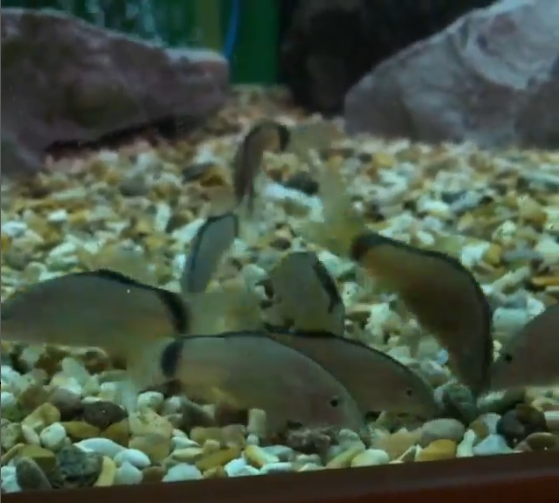
Ideal Tank Size
For these explorative loaches, a minimum tank size of 30 gallons (114 liters) is recommended. Larger tanks not only contribute to healthier water conditions but also furnish sufficient space for the Skunk Loaches to swim and express their bottom-dwelling instincts.
A large tank is crucial in maintaining high water quality, a vital factor for the well-being of Skunk Botias, and alleviates stress by providing ample room for movement. Further, it accommodates peaceful community fish to coexist harmoniously, making for a dynamic and attractive aquarium.
Ideal Water Parameters
Skunk Botias flourish in soft, slightly acidic water conditions with a pH under 7.5 and dH of up to 12 degrees. They adapt to temperatures between 24-30°C (75-86°F), which, along with a preference for neutral water (pH range of 6.0-8.0), should be maintained to keep these loaches healthy.
| Water Parameters | Preferred Conditions |
|---|---|
| pH | 6.0 – 8.0 |
| Temperature | 24-30°C (75-86°F) |
| Water Hardness (dH) | Up to 12 degrees |
Ensuring these conditions can be achieved with proper substrate, plant life, and tank decor mimicking their natural environment. Keep the water gently flowing and moderately hard, and remember that plants and decorations should allow the loaches to demonstrate natural behaviors like hiding and foraging.
Filtration
High-quality filtration is paramount in securing the health of Skunk Botias. Choose a filter system that can turn over the entire volume of the tank water four to five times per hour—for a 30 gallon tank, a filter with a flow rate of 120-150 GPH is advisable.
| Tank Size | Filter Flow Rate |
|---|---|
| 30 gallons | 120-150 GPH (Gallons Per Hour |
This water movement ensures oxygenation and the removal of waste products, thus minimizing the stress on your loaches. Keep in mind, though, that while a strong filter aids in reducing nitrates and maintaining clarity, regular water change routines are still a must for optimal tank health.
Lighting
To replicate the dimly lit environment that Skunk Botias enjoy, and where plants like Aponogeton can thrive, subdued lighting is essential. Both the fish and plants can benefit from low to moderate levels of lighting, helping you achieve a harmonious balance in your tank’s ecosystem.
| Lighting Conditions | Fish Needs | Plant Adaptability |
|---|---|---|
| Low to Moderate | Skunk Botias Comfort | Aponogeton Growth |
Common Possible Diseases & Prevention
Common Possible Diseases & Prevention Skunk loaches, known for their playful antics and unique appearance, are not immune to the ailments common to aquarium fish. They may encounter ich, fin rot, and bacterial infections, which significantly impact their health.
| Preventative Measures | Description |
|---|---|
| Good Water Quality | Regular testing and maintenance |
| Balanced Diet | Provide varied diet, including frozen foods |
| Quarantine New Fish | Isolate newcomers to prevent disease spread |
| Observe Fish Behavior | Monitor for unusual changes or symptoms |
To safeguard these spirited creatures, maintaining pristine water quality is imperative. This includes routine water changes and vigilant monitoring. A well-rounded diet, rich in nutrients, fortifies their immune system—it’s smart to incorporate items like brine shrimp into their meals.
Another crucial step is the quarantine of any new arrivals for the aquarium, mitigating the risk of disease introduction. Stress, often a precursor to illness, should be minimized. This can be induced by aggressive tank mates or unstable water conditions. Monitoring for behavioral shifts or physical changes can be telltale indicators of emerging health issues, allowing for prompt intervention.
Breeding Skunk Botia in Aquarium
Despite their popularity among aquatic enthusiasts, breeding Skunk Botia, or Yasuhikotakia morleti, in captivity remains an elusive goal. These nocturnal feeders hail from the waters of Cambodia, Laos, and Thailand, adding lively dynamics to community tanks with their active, nocturnal behaviors.
Skunk Botias usually live up to around 6 years in a well-maintained aquarium. This lifespan provides ample opportunities to study and understand their distinct behaviors and elusive reproductive patterns. However, even with long-term observation, successful breeding in home aquariums has not been documented.
Identifying the sex of Skunk Botias may offer visual cues; males often have a slimmer profile compared to the fuller form of mature females. This Sexual Dimorphism could potentially aid aquarists in breeding endeavors.
Skunk Botias are known for their assertive nature. They thrive in small groups, which caters to their complex social structures but can present challenges for breeding. They require specific conditions that, if not met, may suppress their natural breeding instincts. Therefore, understanding and replicating the precise triggers for spawning in the home aquarium setting remains a key barrier to breeding these enchanting but enigmatic loaches.

Are Skunk Botia Easy To Keep?
Skunk Botia Loaches, known scientifically as Yasuhikotakia morleti, demonstrate a remarkable resilience that endears them to aquarists, especially those with some experience. These robust and hardy fish adapt well to life in community tanks, presenting themselves as durable additions to the home aquarium. Skunk Loaches showcase nocturnal tendencies by nature but can adjust their schedule to become more diurnal, offering owners more opportunities to observe their intriguing behaviors.
Creating a proper habitat with live plants, ample swimming space, and hiding spots fashioned out of rocks or driftwood contributes immensely to their well-being. Furthermore, their penchant for snail hunting offers a natural solution for controlling unruly snail populations in the tank. True to their semi-aggressive nature, Skunk Loaches appreciate the company of their kind as well as other similar temperament fish, making them sociable community fish.
However, they’re not just easy-going members of the aquatic community but also active scavengers. With simple care requirements involving consistent water quality and a varied diet, including brine shrimp and frozen foods, these fish can indeed be easy to keep, making them suitable for most community aquariums with an intermediate level of fish-keeping knowledge.
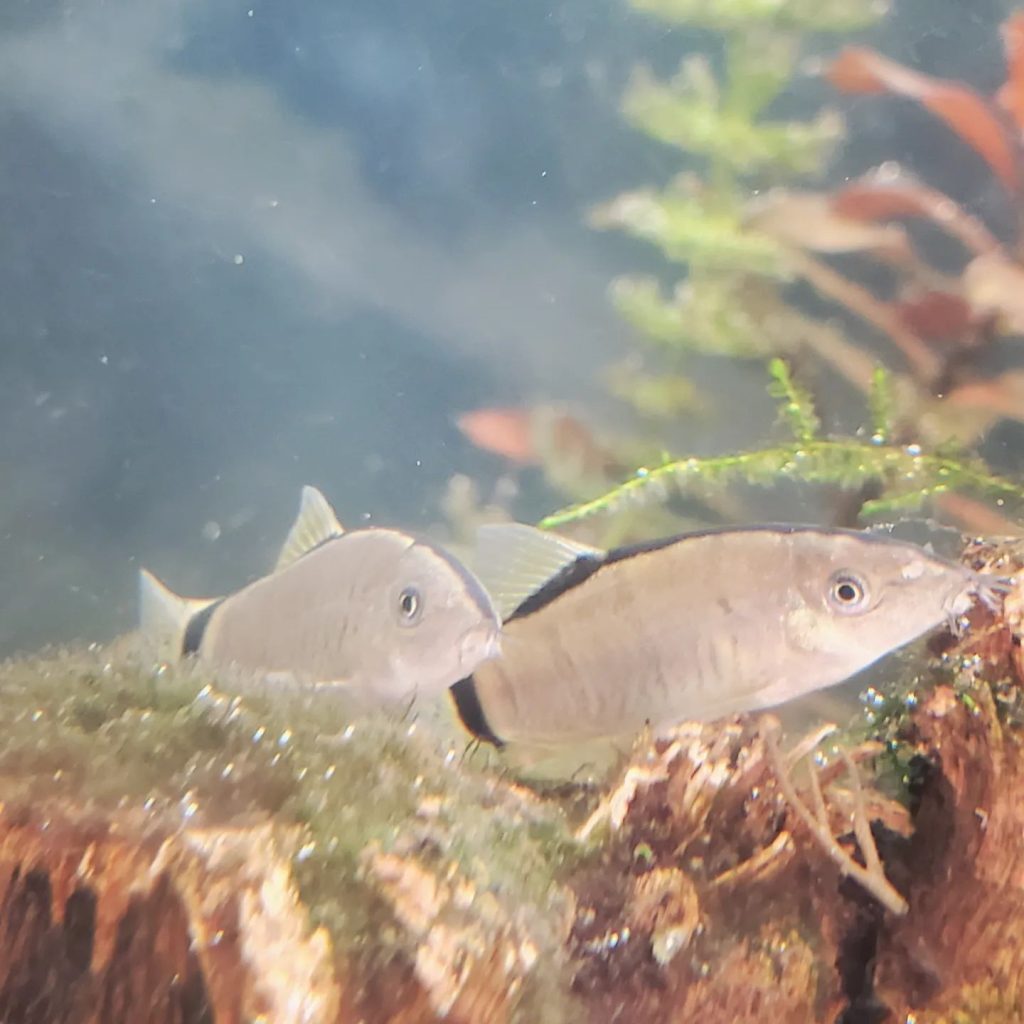
Are Skunk Botia Sensitive To Water Changes?
When it comes to Skunk Botia Loaches, careful attention must be given to their environment, particularly during water changes or when introducing them to a new tank. These loaches have notable sensitivity to water conditions, which necessitates a gentle acclimation process. The tank water they find themselves transported into can drastically differ from the water they were accustomed to, highlighting the need for a gradual transition.
Upon their arrival to their new home, it is paramount that aquarists darken the aquarium lights, providing a stress-free environment for at least the first 4 hours. Moreover, a fasting period where the loaches are not fed for the first 24 hours allows them to adjust to their new surroundings without additional stress from digestive demands.
There are two principal methods to acclimate Skunk Botias to a new tank: the Floating Method, which involves floating the sealed bag in the tank to equalize temperature, and the Drip Method, which carefully introduces tank water to the bag over time. Rushing these steps could lead to stress-induced illnesses or fatalities among the fish. This vigilant approach reaffirms Skunk Botias’ sensitivity to water changes and underscores the vital importance of a slow and proper acclimation process to ensure their health and longevity.
Are Skunk Botia Sensitive To Ammonia?
Maintaining impeccable water quality is non-negotiable when it comes to Skunk Botias, as their tolerance for poor water conditions is particularly low. Ammonia, often a product of waste breakdown, poses a significant risk to these loaches. High levels of this toxic compound can provoke severe health issues, behavior changes, and heightened stress, leading to a weakened immune system and making them susceptible to diseases like skinny disease.
| Water Quality Indicator | Importance |
|---|---|
| Ammonia levels | Must remain near zero to prevent poisoning |
| Filtration System | Necessary for the reduction of ammonia levels |
Regular testing of ammonia levels is critical to preempt any health complications. A reliable filtration system, coupled with consistent water changes, helps in maintaining ammonia concentrations at bay. The sensitivity of Skunk Botias to even trace amounts of ammonia is a compelling reminder for aquarium enthusiasts to engage in diligent water quality management to avert the dire consequences of ammonia spikes.
Are Skunk Botia Sensitive To Copper?
Skunk Botias, while hardy in many respects, possess a marked vulnerability to copper exposure. Copper, sometimes present in tap water or used in certain aquarium treatments, can be extremely toxic to these loaches. Even minimal contact with this heavy metal can induce illness or sadly, lead to their demise.
Awareness of potential copper sources is a crucial aspect of Skunk Botia care. From decorations to equipment, and even some fish medications, can inadvertently introduce copper into their environment. Regular water testing becomes an indispensible practice to ensure copper levels remain non-toxic and conducive to the well-being of Skunk Botias.
To safeguard these captivating creatures and foster a flourishing environment, caution must be exercised when using any treatments and ensuring all water sources are devoid of copper contaminants. Through vigilant monitoring and preemptive maintenance, aquarists can provide a refuge for Skunk Botias where they can thrive without the threat of copper-related health issues.

